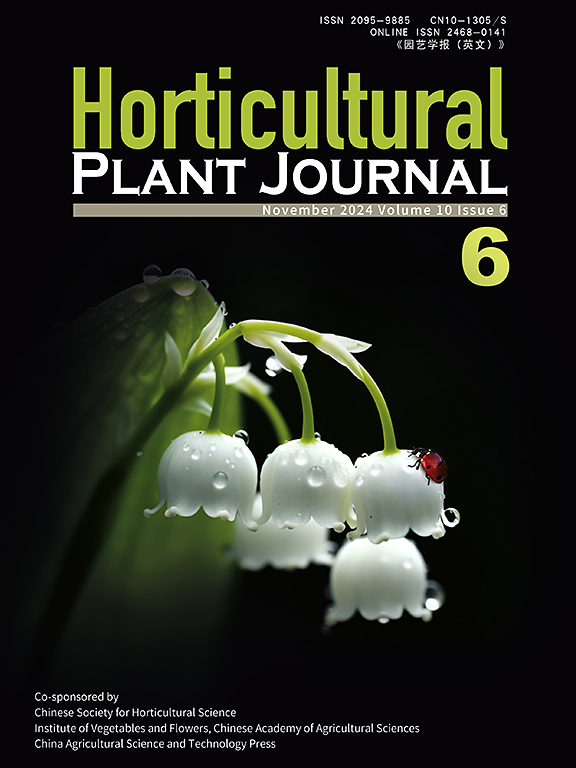The development of liquid-phase chip by target sequencing and their application in watermelon molecular breeding
IF 6.2
1区 农林科学
Q1 HORTICULTURE
引用次数: 0
Abstract
Genotyping by Target Sequencing (GBTS) technology, known for its flexibility, high efficiency, high throughput, and low cost, has been increasingly employed in molecular breeding. However, there is still limited study on the design and development of high-throughput genotyping tools in watermelon. In this study, we identified 112 000 high quality SNPs by analyzing the resequencing data of 43 cultivated watermelon accessions. 11 921 and 6094 SNPs were selected for developing two sets of watermelon liquid-phase chips with different marker densities, named Watermelon 10K and 5K, respectively. Furthermore, the SNPs and Indels of most mapped gene/QTLs for many agronomic important traits in watermelon were also integrated into the two chips for foreground selection. These chips have been tested using GBTS technology in various applications in watermelon. The genotyping of 76 accessions by Watermelon 5K liquid-phase chip showed an average detection rate of 99.28 % and 81.78 % for cultivated and wild watermelon accessions, respectively. This provided enough markers information for GWAS and two significant QTLs,目的测序液相芯片的研制及其在西瓜分子育种中的应用
目标测序基因分型(GBTS)技术以其灵活性、高效率、高通量和低成本而著称,已越来越多地应用于分子育种领域。然而,对西瓜高通量基因分型工具的设计和开发的研究还很有限。在本研究中,我们通过分析 43 个西瓜栽培品种的重测序数据,鉴定了 112 000 个高质量 SNPs。筛选出 11 921 和 6094 个 SNPs,用于开发两套具有不同标记密度的西瓜液相芯片,分别命名为 Watermelon 10K 和 5K。此外,西瓜中许多重要农艺性状的大多数映射基因/QTL 的 SNPs 和 Indels 也被整合到这两个芯片中,以进行前景选择。这些芯片已利用 GBTS 技术在西瓜的各种应用中进行了测试。西瓜 5K 液相芯片对 76 个西瓜品种进行了基因分型,结果显示,栽培西瓜和野生西瓜品种的平均检出率分别为 99.28 % 和 81.78 %。这为 GWAS 提供了足够的标记信息,并发现了两个与可溶性糖含量相关的显著 QTLs(ssc1.1 和 ssc1.2)。此外,通过液相芯片验证了非裂叶和矮小性状的 BSA-seq 分析,候选区域与我们之前的研究一致。此外,我们还利用西瓜 5K 将 Cldw1 和 Clbl 基因精确导入到精英近交系 WT2 中进行辅助选择,从而培育出三个具有良好植株结构的新种质。作为一种高通量基因分型液相 SNP 阵列,Watermelon 10K 和 5K 芯片将极大地促进西瓜的功能研究和分子育种。
本文章由计算机程序翻译,如有差异,请以英文原文为准。
求助全文
约1分钟内获得全文
求助全文
来源期刊

Horticultural Plant Journal
Environmental Science-Ecology
CiteScore
9.60
自引率
14.00%
发文量
293
审稿时长
33 weeks
期刊介绍:
Horticultural Plant Journal (HPJ) is an OPEN ACCESS international journal. HPJ publishes research related to all horticultural plants, including fruits, vegetables, ornamental plants, tea plants, and medicinal plants, etc. The journal covers all aspects of horticultural crop sciences, including germplasm resources, genetics and breeding, tillage and cultivation, physiology and biochemistry, ecology, genomics, biotechnology, plant protection, postharvest processing, etc. Article types include Original research papers, Reviews, and Short communications.
 求助内容:
求助内容: 应助结果提醒方式:
应助结果提醒方式:


